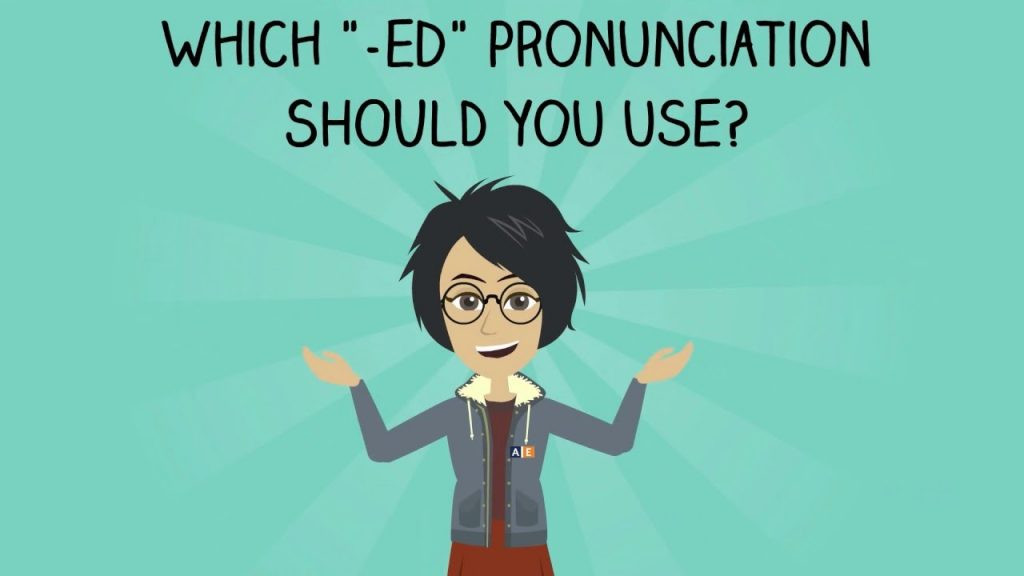How to add the suffix ed to the end of a verb and how to read it
In English there are regular and irregular verbs. When changing to the past or past participle form, regular verbs need to add the ed ending. Let EnglishTopVN help you learn how to add the ed ending as well as how to pronounce the ed ending.
1. Rules for adding -ed after verbs
- Most regular verbs have -ed added directly to the end
For example:
work - worked
clean - cleaned
wash - washed
- With verbs ending in e, we just add d.
For example:
dance - danced
hope - hoped
- With verbs ending in consonant + y, we change y to i and then add -ed.
For example:
study - studied
apply - applied
- With 1 syllable verbs ending in consonant + vowel + consonant, we double the last consonant before adding -ed.
For example:
plan - planned
rob - robbery
- For verbs with more than 1 syllable, the last syllable ends with consonant + vowel + consonant and is the stressed syllable, we also double the last consonant and add -ed.
For example:
prefer - preferred
regret - regretted
Attention:
+ We do not double the final consonant if the word ends with 2 consonants
For example:
hack - hacked (unauthorized intrusion into computer data)
burn - burned
+ We do not double the final consonant if it is preceded by two vowels
For example:
boil - boiled
complaining - complaining
+ We do not double y or w when they are at the end of a word
For example:
play - played
bow - bowed
2. Overview of ed pronunciation
Before learning about the rules for pronouncing the ending ed, we need to distinguish between voiced and voiceless sounds. In English, there are a total of 15 voiced consonants and 9 voiceless consonants.
Voiced sounds:
These are the sounds when speaking, the breath goes from the throat, through the tongue, teeth and then out, vibrating the vocal cords. Place your finger in your throat and practice the /r/ sound and you will feel this vibration more clearly.
Voiced consonants in English: /b/, /d/, /g/, /δ/, /ʒ/, /dʒ/, /m/, /n/, /ng/, /l/, /r/, /y/, /w /, /v/ and /z/.
Voiceless sound:
These are speaking sounds that come out with air from the mouth, not from the throat, so the throat will not vibrate. You put your hand on your throat and pronounce the letter /k/. You won't seevibrate, but just light noises like popping or wind.
Voiceless consonants in English: /p/, /t/, /k/, /f/, /θ/, /s/, /∫/, / t∫/, /h/.
To learn correct pronunciation in English, distinguishing between voiced and voiceless sounds is a very important part. So please review your pronunciation of the above sounds and correct them correctly!

How to pronounce ed in English
3. After distinguishing the sounds, how will you pronounce the ending ed?
We encounter the ending ed in verbs in the past tense, perfect tense and in adjectives. There are 3 main ways to pronounce ed in Rulepsing in English, is determined by the final consonant of the word.
3.1. The ed ending is pronounced /id/
- With verbs ending in /t/ or /d/
- With adjectives ending in /ed/
When a verb is used as an adjective, regardless of how the ending consonant is pronounced, the ending ed is pronounced /id/

How to pronounce ed with adjectives
3.2. ed suffix pronunciation is /t/
The rules for pronouncing the ending ed with verbs that have the ending pronunciation are these voiceless consonants /s/, /ʃ/, /tʃ/, /k/, /f/, /p/.
For example:
-
Washed: /wɔːʃt/
-
Looked: /lu:kt/
-
Missed: /mist/
3.3. Tails ed pronunciation is /d/
Rules for pronouncing the ed ending with verbs whose ending pronunciation is the remaining voiced consonants and vowels.
For example:
-
Smiled /smaɪld/
-
Opened /oupәnd/
-
Worried /wз:id/
These are the 3 main pronunciation rules of the ending ed in English. Besides how to pronounce ending sounds in English, you need to pay attention to stress and intonation when communicating. Even if a sentence is pronounced correctly and clearly, without stress and connection between words, it will not be natural and will not express the full meaning of the sentence. For those just starting out, or learning online at home, you should build one for yourself Detailed and specific learning roadmap from A-Z Start from the most basic sounds, easy to remember and practice every day.
4. Special ed pronunciation spell
In the case of the ed ending pronounced /id/, almost anyone who has read it can easily remember it very quickly, but in the other two cases, it is not easy and is quickly forgotten. So in addition to learning by distinguishing between voiceless and voiced sounds, let's learn some more ways to distinguish ed in the remaining two cases.

Pronunciation rules in English
-
Pronounce /id/ if the word ends in /t/ or /d/: mantra I go
-
Pronounce /t/ if the word ends in “s” or has a pronunciation ending in /s/, /ʃ/, /tʃ/, /k/, /f/, /p/:
-
Pronounced as /d/ for the remaining sounds

